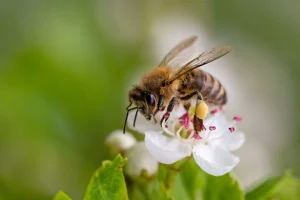Trees are essential pillars of our natural environment, providing benefits that extend far beyond their aesthetic appeal. One of their most critical roles is supporting local wildlife and pollinators. From offering shelter and food to creating habitats that sustain entire ecosystems, trees play a fundamental role in maintaining biodiversity. For homeowners and landowners in Southwest Washington, understanding the significance of trees in supporting wildlife can lead to better conservation efforts and healthier landscapes.
 The Role of Trees in Supporting Wildlife
The Role of Trees in Supporting Wildlife
1. Providing Shelter and Nesting Sites
Trees offer critical shelter for a wide range of wildlife, from birds and squirrels to larger mammals like deer. Many species rely on trees for nesting, roosting, and protection from predators. Different types of trees serve different needs:
- Deciduous trees, such as maples and oaks, provide nesting sites for birds like robins and woodpeckers.
- Coniferous trees, like pines and firs, offer year-round shelter for animals seeking protection during harsh weather conditions.
- Dead or hollow trees, often overlooked, are essential for bats, owls, and insects that require cavities for their nests.
By maintaining a diverse tree canopy, property owners can create a thriving habitat that caters to various species year-round.
2. Offering a Food Source
Trees are a vital source of food for countless creatures, offering fruits, nuts, seeds, and leaves that sustain local wildlife.
- Fruit-bearing trees, such as apple, cherry, and berry-producing trees, provide sustenance for birds, deer, and small mammals.
- Nut trees, including walnuts and hazelnuts, serve as essential food sources for squirrels and chipmunks.
- Flowering trees, like dogwoods and maples, produce nectar that attracts pollinators such as bees, butterflies, and hummingbirds.
By planting native trees that produce food naturally suited for local wildlife, property owners can encourage a balanced ecosystem in their area.
3. Serving as Corridors for Movement
Wildlife requires safe passage to move between habitats, and trees provide natural corridors that connect fragmented ecosystems. In urban and suburban areas, tree-lined streets and green belts offer refuge for animals traveling between parks and forests. Maintaining tree cover in both residential and commercial properties helps preserve these natural pathways, reducing wildlife exposure to roadways and human disturbances.
The Connection Between Trees and Pollinators
1. Providing Nectar and Pollen
Pollinators, including bees, butterflies, and hummingbirds, rely on trees as primary sources of nectar and pollen. Without trees, these essential creatures would struggle to find food, leading to a decline in pollination rates for both wild and agricultural plants.
- Flowering trees, such as magnolias, lindens, and serviceberries, attract a variety of pollinators.
- Early bloomers, like willows and maples, provide some of the first food sources for pollinators emerging in spring.
By planting a mix of trees that bloom at different times of the year, property owners can ensure that pollinators have access to food throughout the seasons.
2. Offering Habitat and Protection
Pollinators not only feed on trees but also use them for nesting and shelter. Many native bees, for example, nest in hollowed-out tree trunks or beneath loose bark. Trees also act as windbreaks, creating microclimates that help protect delicate pollinators from harsh weather conditions.
For those looking to support pollinators, preserving old trees and planting new ones that offer nesting opportunities can make a significant impact.
Best Practices for Supporting Wildlife and Pollinators Through Tree Care
If you want to maximize the benefits your trees provide to wildlife and pollinators, consider the following steps:
1. Plant Native Tree Species
Native trees are adapted to the local environment and serve as the best food and shelter sources for native wildlife. Some excellent choices for Southwest Washington include:
- Bigleaf Maple
- Western Red Cedar
- Douglas Fir
- Pacific Dogwood
2. Maintain a Diverse Tree Canopy
Having a mix of tree species with varying heights, leaf structures, and blooming times ensures a year-round supply of resources for wildlife and pollinators. Diversity also strengthens the resilience of your local ecosystem.
3. Avoid Pesticides and Harmful Chemicals
Many chemical pesticides and herbicides can be harmful to beneficial insects and wildlife. Opt for organic or natural alternatives whenever possible, or consult with a professional arborist to ensure environmentally friendly pest control solutions.
4. Preserve Dead Trees and Fallen Logs
While it may be tempting to remove deadwood, leaving some dead trees and logs in place can provide essential nesting sites and food for insects, which in turn support larger wildlife species.
5. Work with a Professional Arborist
If you’re unsure which trees to plant or how to care for them to benefit wildlife, consulting with an arborist can help. Experts like those at New Day Arborist can assess your landscape and recommend the best strategies for fostering a thriving habitat.
Call Us Now!
Trees are more than just decorative features—they are vital components of the natural world that support biodiversity and ecological balance. By understanding how trees contribute to wildlife and pollinator populations, property owners can take meaningful steps to create healthier, more sustainable environments. Whether planting new trees, maintaining existing ones, or adopting wildlife-friendly practices, every effort helps strengthen the delicate web of life that trees sustain.
For expert tree care services in Southwest Washington, contact New Day Arborist today. Our team is dedicated to helping property owners enhance their landscapes while supporting local ecosystems.